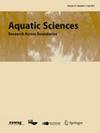Contribution and control of microbial necromass carbon in wetland soils
Abstract
Microbial necromass carbon (MNC) has been identified as an essential component of a persistent soil carbon pool. However, the contribution of MNC to soil organic carbon (SOC) in wetlands remains unclear. This study aims to explore the contribution of MNC to SOC and the factors controlling its distribution in wetlands. The distribution pattern of MNC in drawdown areas was investigated in the inlet and center of the Dongting Wetland, China. Random forest modeling was performed to determine the relative importance of environmental variables to MNC. A partial least squares path model was performed to further explore the direct and indirect effects of environmental variables on MNC. The analyses showed that the MNC content was 2652.70–3314.64 mg kg−1, accounting for 23.16–31.65% of SOC in wetland soils. Compared to bacterial necromass carbon (BNC), fungal necromass carbon (FNC) contributed more to SOC accumulation (over 70% of total MNC) in wetland soils. MNC content and the contribution of BNC to MNC increased with soil depth. In addition, MNC in wetland soils was directly affected by dissolved total nitrogen (DTN) and dissolved organic carbon (DOC)/SOC (p < 0.001; standardized total effect = 0.81). The pH indirectly affected MNC by regulating carbon and nitrogen content, with a standardized total effect of 0.48. In wetland soils, the lower MNC content and lower contribution to SOC may be supported by the slow accumulation of necromass and potential necromass mining in nutrient-poor conditions. Carbon and nitrogen availability played a crucial role in controlling the MNC turnover process in wetland soils.


 求助内容:
求助内容: 应助结果提醒方式:
应助结果提醒方式:


